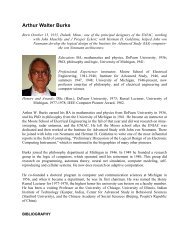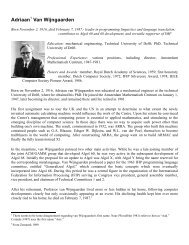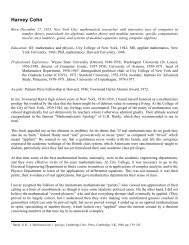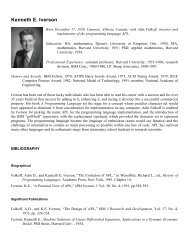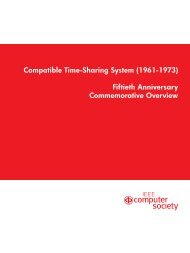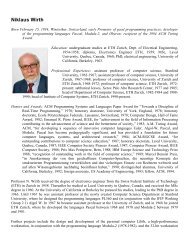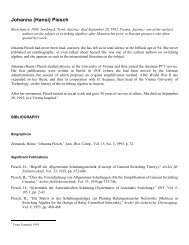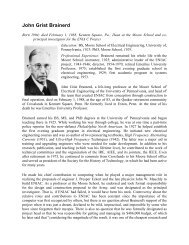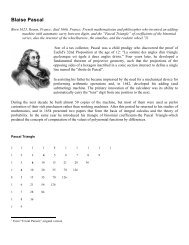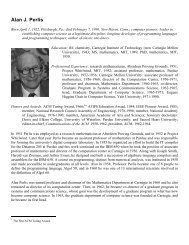John Vincent Atanasoff - Walden Family
John Vincent Atanasoff - Walden Family
John Vincent Atanasoff - Walden Family
Create successful ePaper yourself
Turn your PDF publications into a flip-book with our unique Google optimized e-Paper software.
Formal Litigation<br />
We use the term “formal litigation” for the two processes, deposition and trial, by which evidence is produced<br />
for the judge (or jury) to use in reaching a verdict. This part of litigation is the major part; in important cases,<br />
the records become voluminous. In the matter of computer litigation being considered here, there were only two<br />
cases at that time, the Memory case and the ENIAC case; even so, the legal documents numbered in the<br />
thousands.<br />
In the early years while the trials were pending, there were many depositions, including those of the principal<br />
witnesses and of many other witnesses who would not attend the trial. I was deposed once for each of the two<br />
trials. While my first deposition, on the Memory case, was rather short, the second, on the ENIAC case, lasted<br />
approximately two weeks, beginning on November 11, 1968. In both cases, Dodds was counsel for Sperry-<br />
Rand.<br />
Among the witnesses deposed (of personal interest to me) were myself, both trials; Mauchly, both trials; J.<br />
Presper Eckert, both trials; Lura Meeks <strong>Atanasoff</strong>, both trials; and Sam Legvold, both trials; as well as many<br />
other people. Clifford Berry was not alive at the time of the deposition, but in a way a letter he wrote to R.K.<br />
Richards 1 on March 22, 1963, quoted again and again in the trial, served as a statement by him of the situation<br />
when Mauchly came to Ames.<br />
The deposition of Dr. <strong>John</strong> W. Mauchly October 11, 12, 13, 1967, was taken on behalf of the defendant, CDC,<br />
in the suit by Sperry-Rand on the so-called Memory patent 2,629,827 and certain other patents.<br />
Mauchly spoke of his visit to see our machine. He spoke of being cordially received, but hinted that no one was<br />
willing to tell him all about the machine. He claimed that nothing worked except the motor. There was no<br />
demonstration of the action of the machine, he asserted.<br />
He said he had no time with the machine: perhaps half-an-hour. Later: perhaps 1½ hours.<br />
He saw one cylinder of condensers, he said. He learned that memory was retained by the use of regeneration,<br />
but said he was not told how the regeneration worked.<br />
Both Sam Legvold (a former student and employee) and myself, on deposition and in trial testimony, stated<br />
under oath (and Berry in his 1963 letter to Richards corroborated), that when Mauchly visited the computer<br />
laboratory at Ames, he was given the full details of the project and he was given much more than anyone else;<br />
that he was given the complete current operational test of the computer; that he spent a length of time with the<br />
machine in excess of 16 hours, took his coat off to work on the machine in his shirtsleeves and held certain parts<br />
of the machine in his hands; and that he saw our current memorandum (August 1940) on the machine and took<br />
notes.<br />
Honeywell versus Sperry-Rand<br />
1 See Biography of Clifford Berry.






